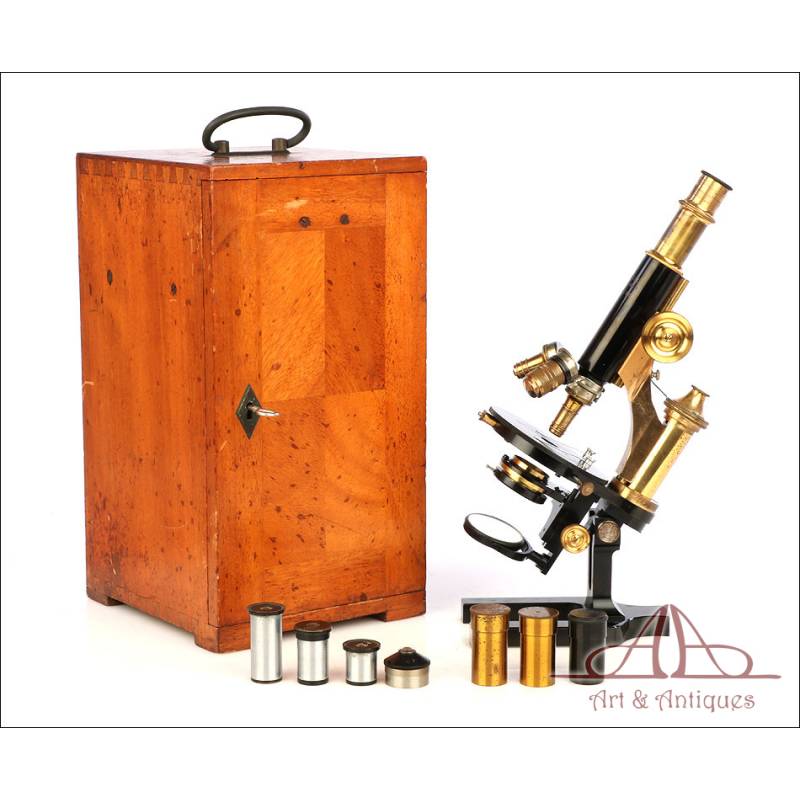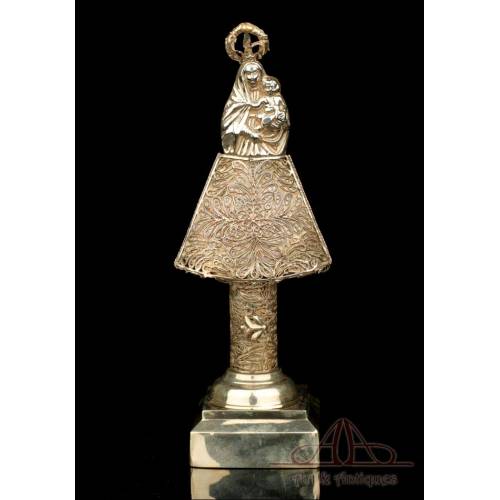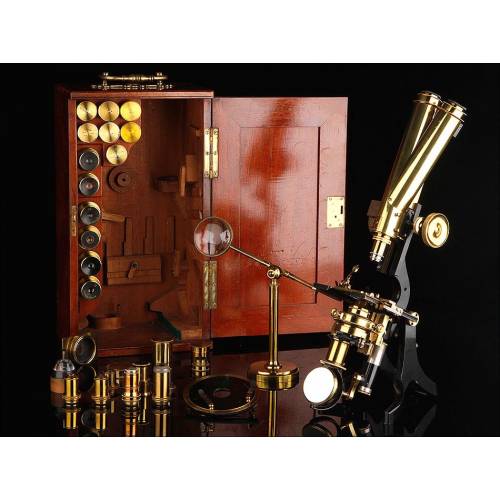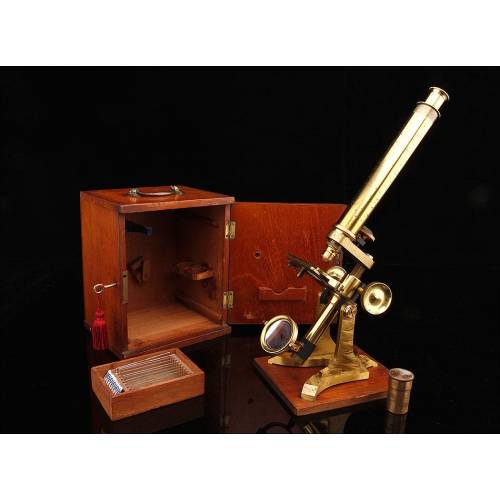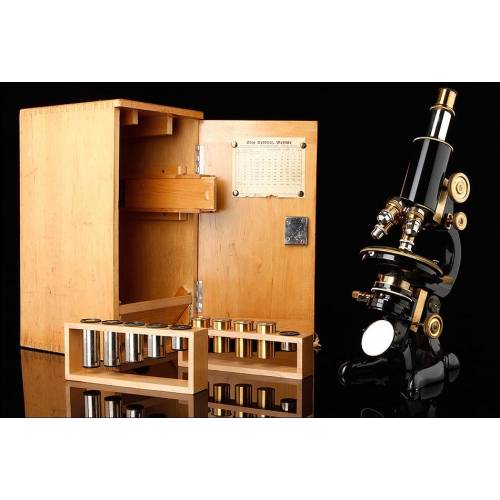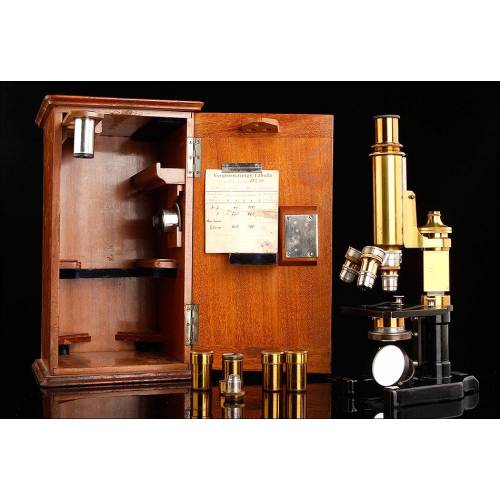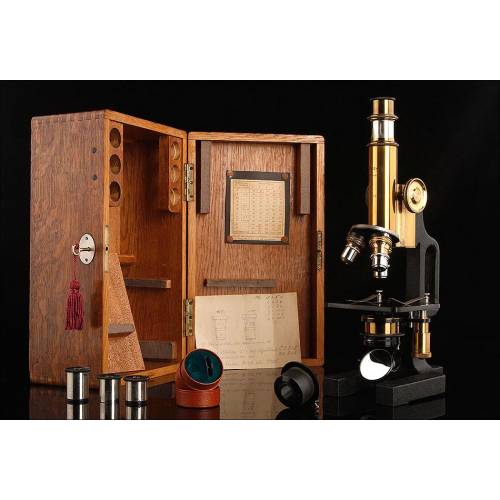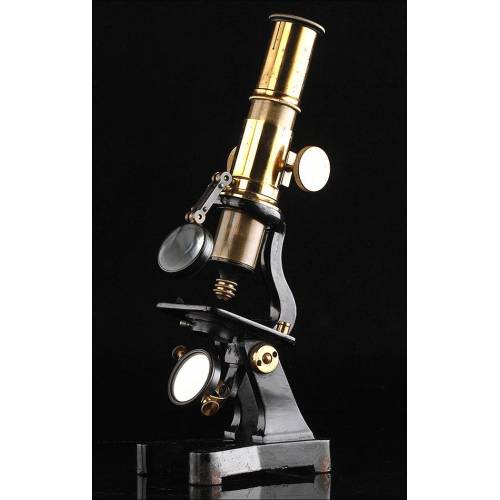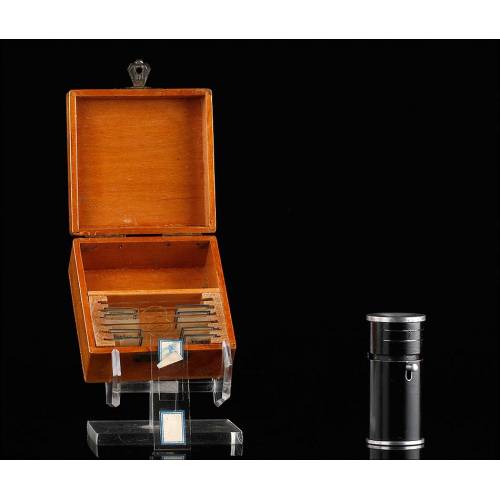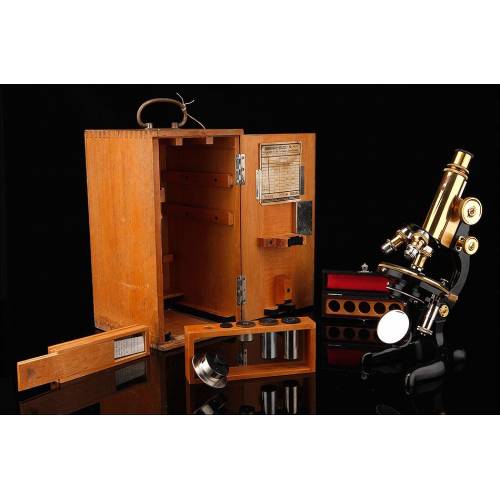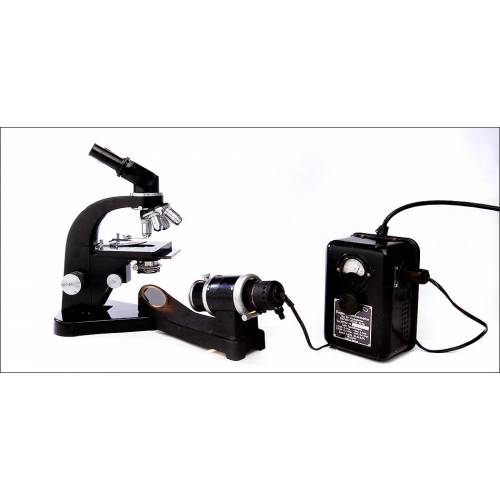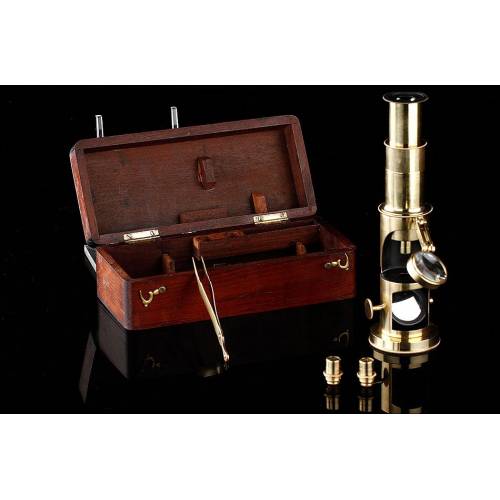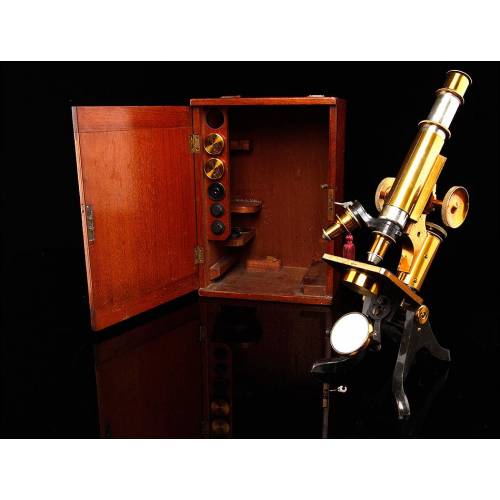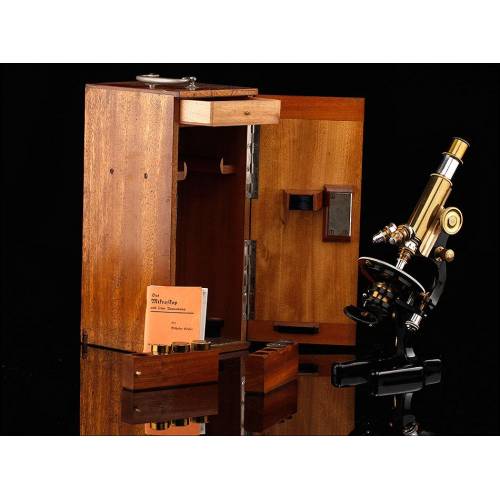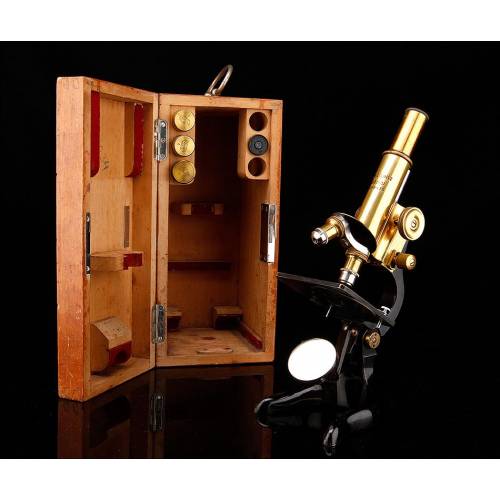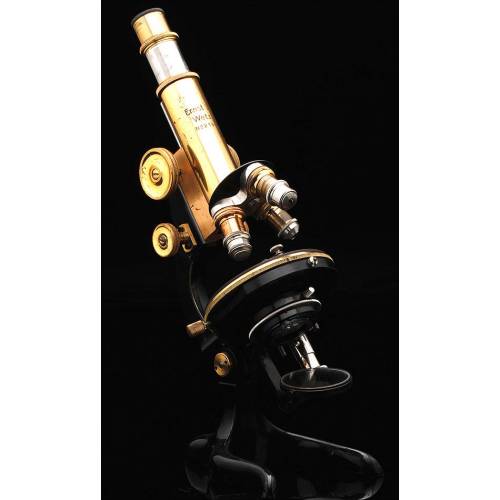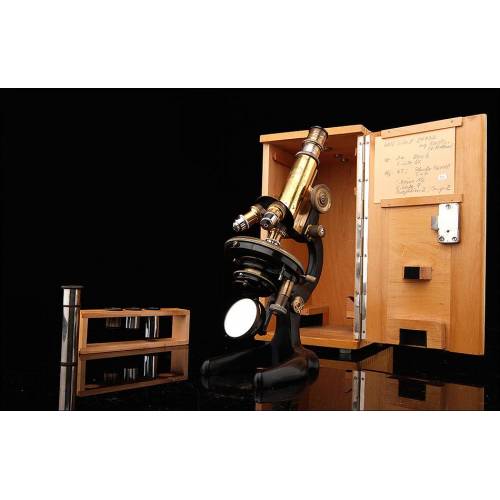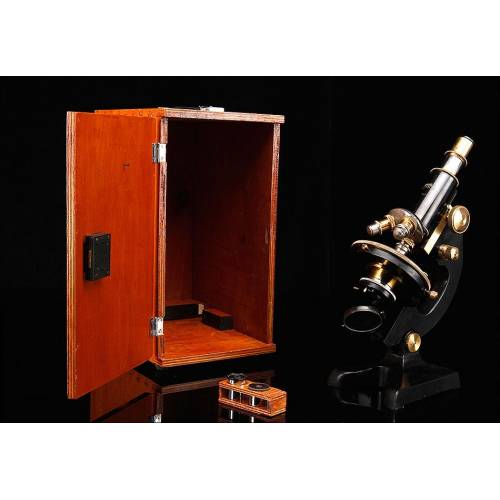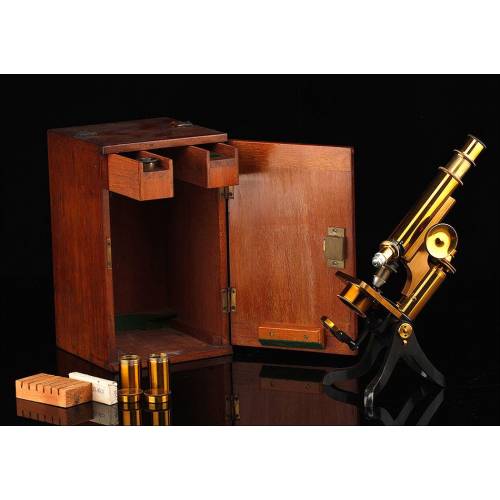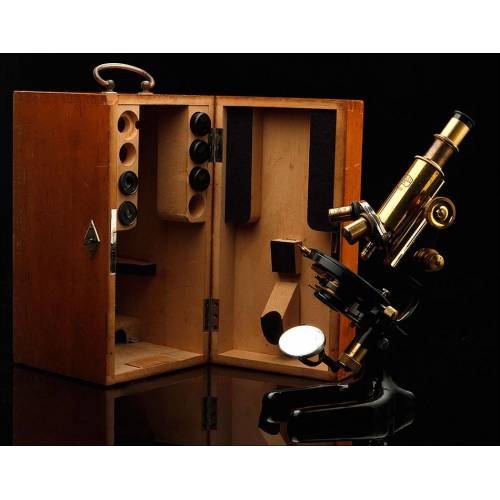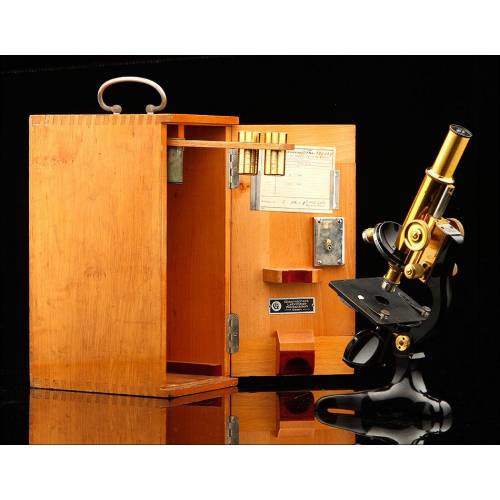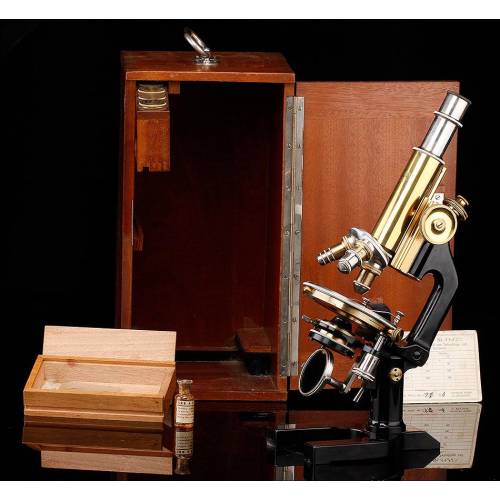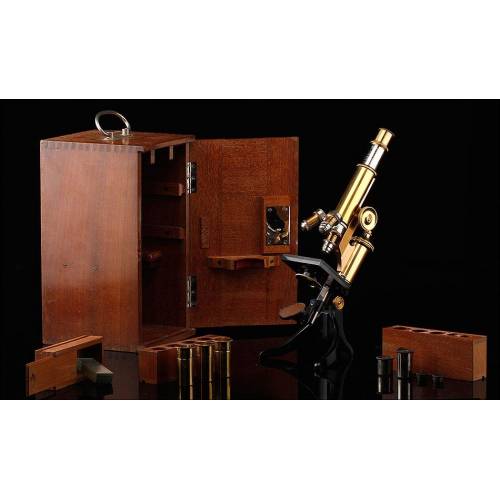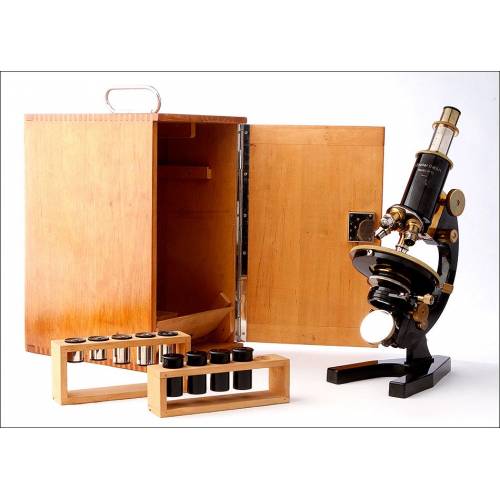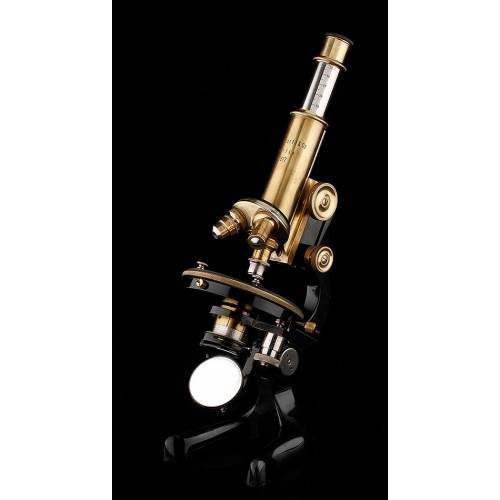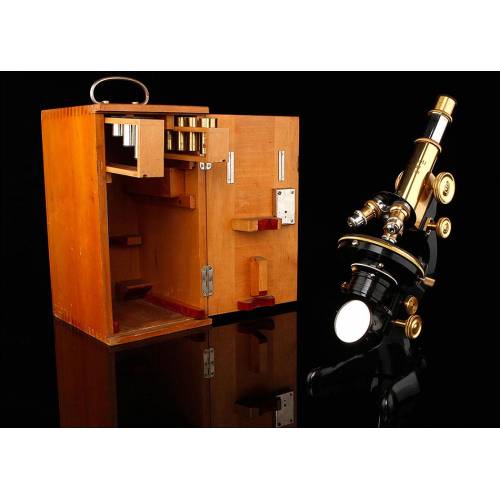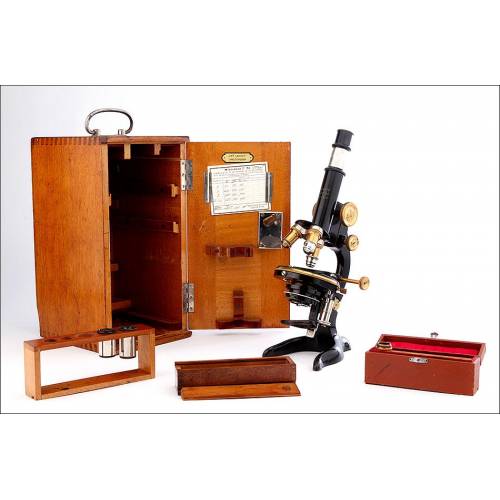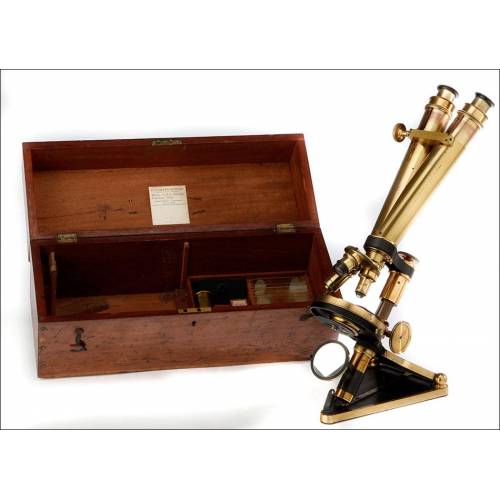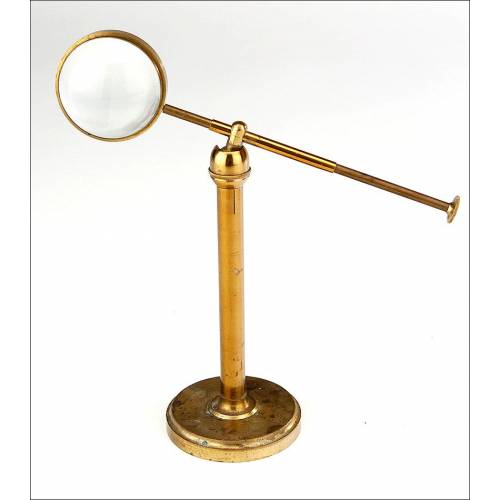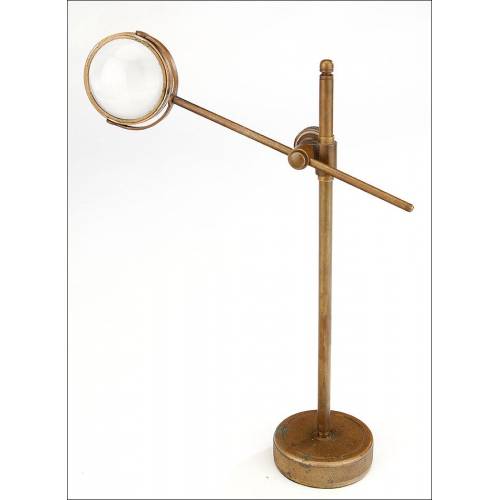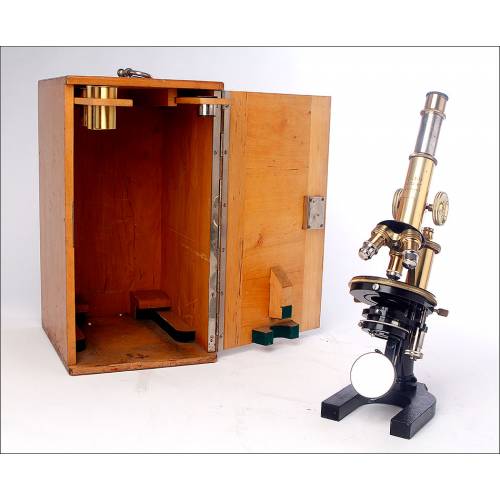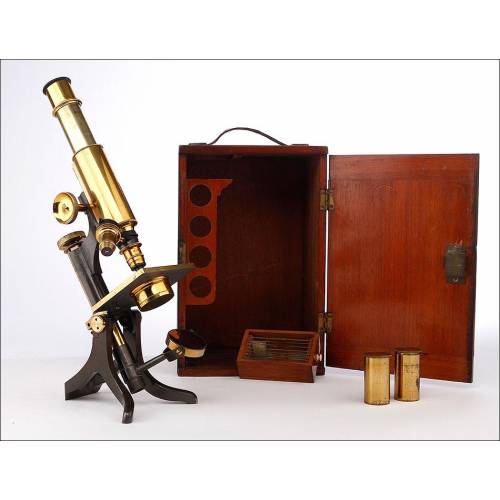C-938
Antique German Winkel Microscope with Carl Zeiss Optics. Germany, Circa 1930
Superb Winkel microscope with Carl Zeiss accessories. Adjusted and rack and pinion in perfect condition. In very good condition.
Sold!
Antique German Winkel microscope with Carl Zeiss optics, made in Germany circa 1930 and in good condition. The microscope works fine, mounts a three-lens revolving nosepiece and comes in its original mahogany wooden box. It comes with a set of three eyepieces and three lenses, all of them signed Carl Zeiss Jenna. In the 1930s, Winkel was a limited company whose main shareholder was Carl Zeiss. This is why the lenses and the eyepieces bear the name of the renowned optic material manufacturer. The microscope combines black-enameled foot, stage and turret with brass mobile component parts. The brass preserves the original transparent lacquered finish that provides it with a warm and beautiful patina. The enamel and the metal are well preserved and show only slight signs of the trace of time that only increase the microscopes attractiveness and character. The turret bears the engraved manufacturers name and the serial number: R. WINKEL GÖTTINGEN Nr. 14498. The rack-and-pinion system, the fine adjustment and the shutter are in perfect working order; all the knobs and screws move fluidly and softly, turning the use of this microscope into a real pleasure. Beautiful and functional, this antique German Winkel microscope with Carl Zeiss optics is a charming collectors piece with a strong personality. Dimensions: Width: 6.4 in / 16 cm. Height: 14.4 in / 36 cm.R. Winkel Microscopes - History Rudolf Winkel was a German mechanic, optician and entrepreneur who in 1841 started his apprenticeship as a mechanical engineer in Hamburg and then in Hannover. Later he would move to Kassel, where he began learning how to manufacture precision instruments. In 1875 Winkel started his own business, a workshop where he made precision mechanical instruments for different companies and for the University of Gottingen too. In the mid-1860s he started manufacturing microscopes; success came in 1870, when he launched his first big-sized instruments. The company focused in the microscope production and moved to larger facilities. Between 1872 and 1880, Rudolfs sons entered the firm as apprentices. In 1890 the firm had 30 employees and exported their microscopes to Austria, England, Russia and the USA. The founder died in 1905 but his three sons maintained the business active. In 1911 Carl Zeiss entered the company as main shareholder and Winkel became an Ltd.

